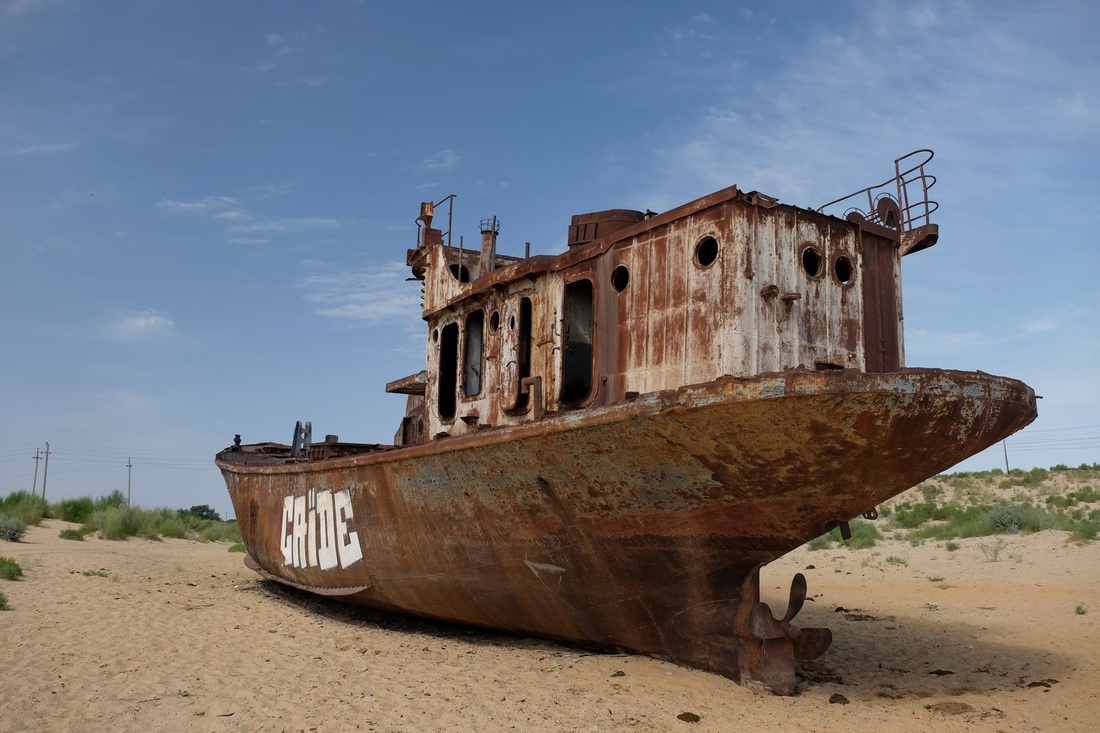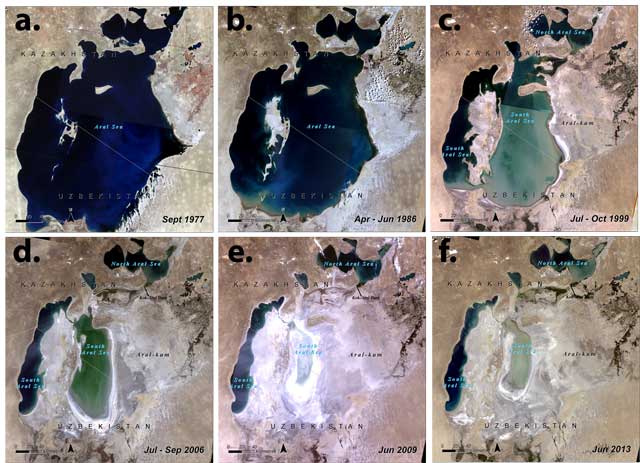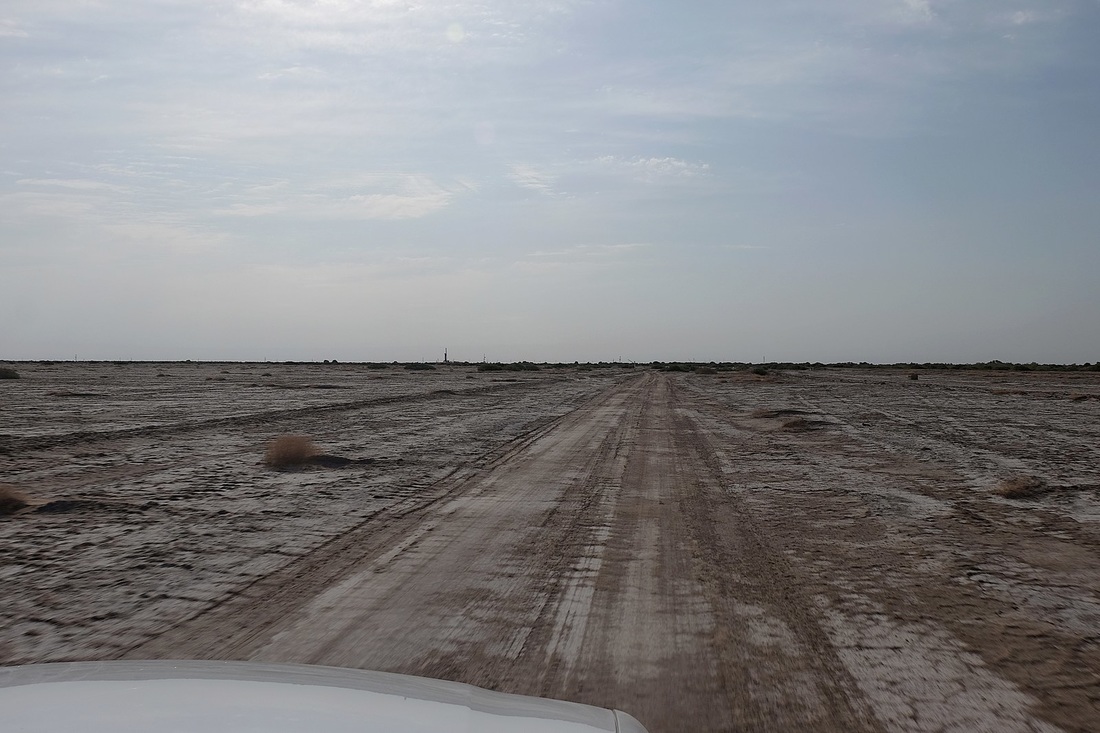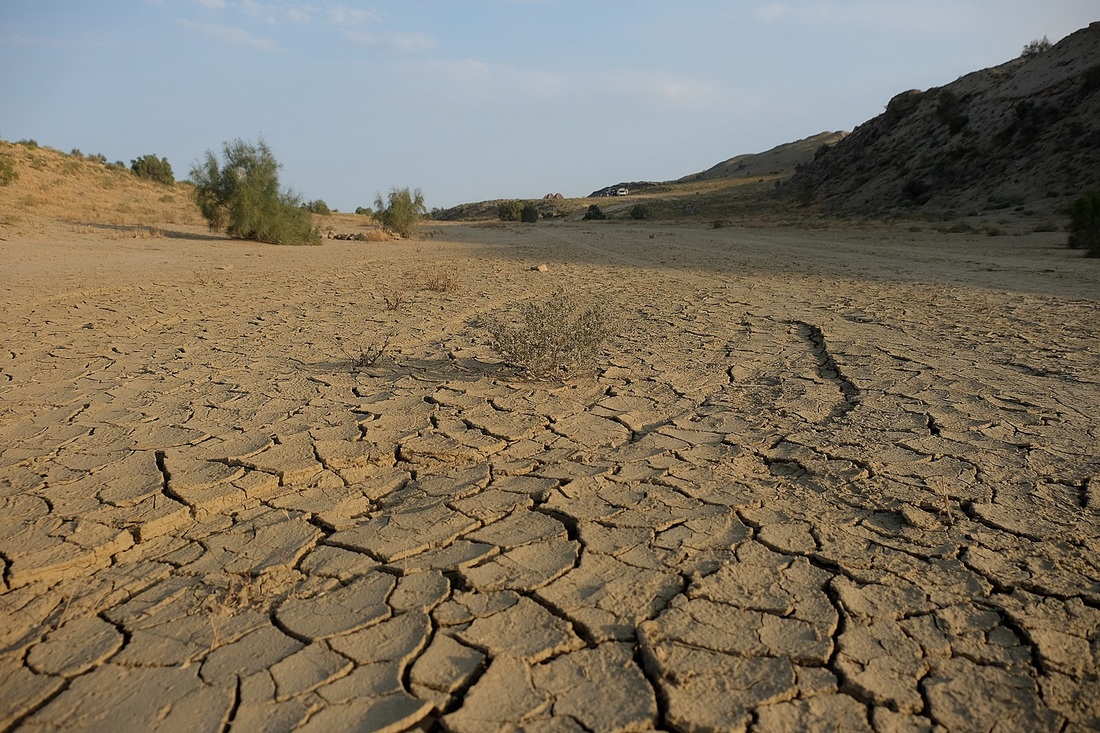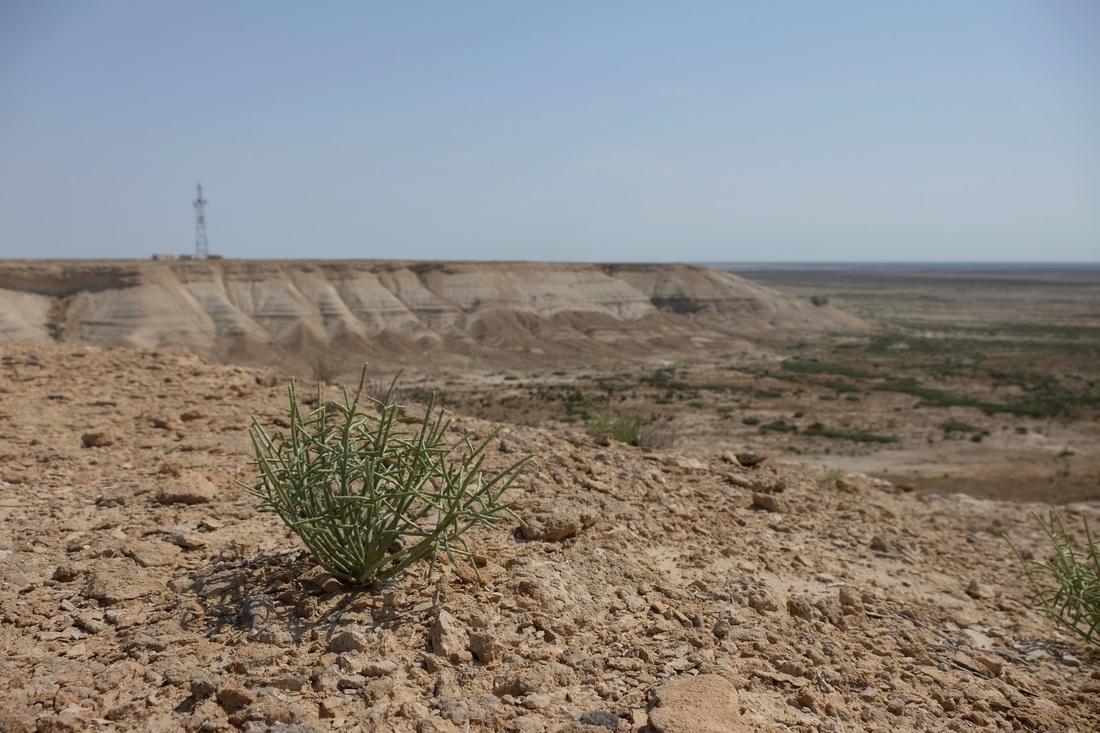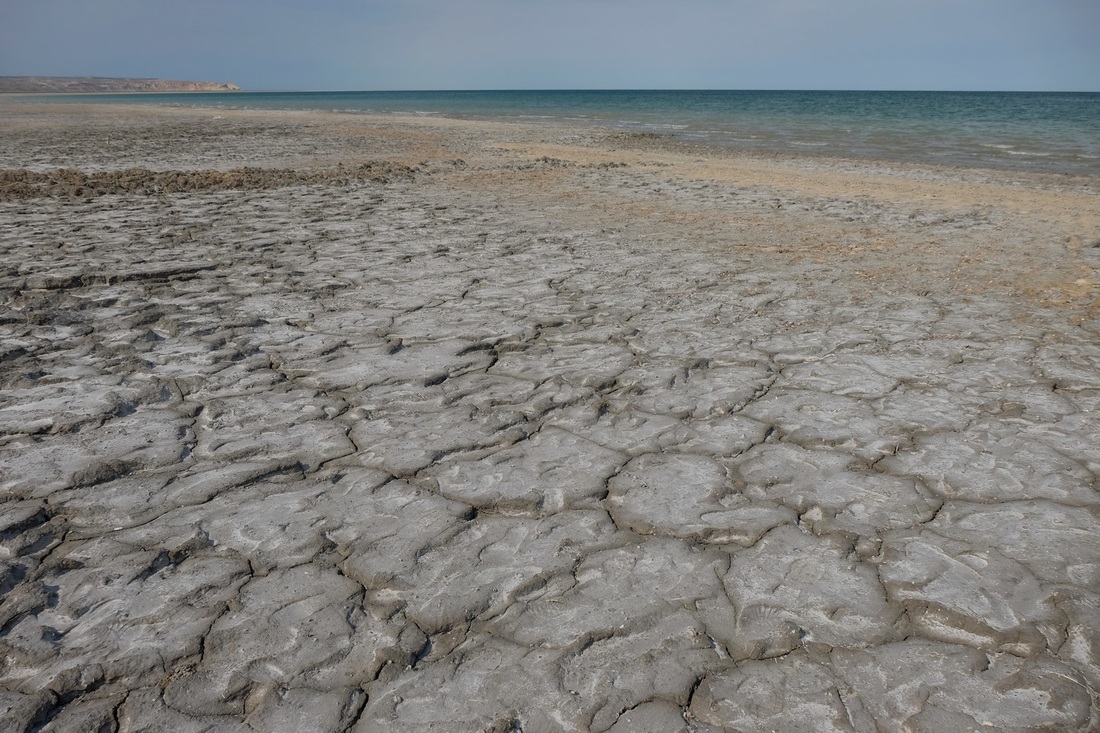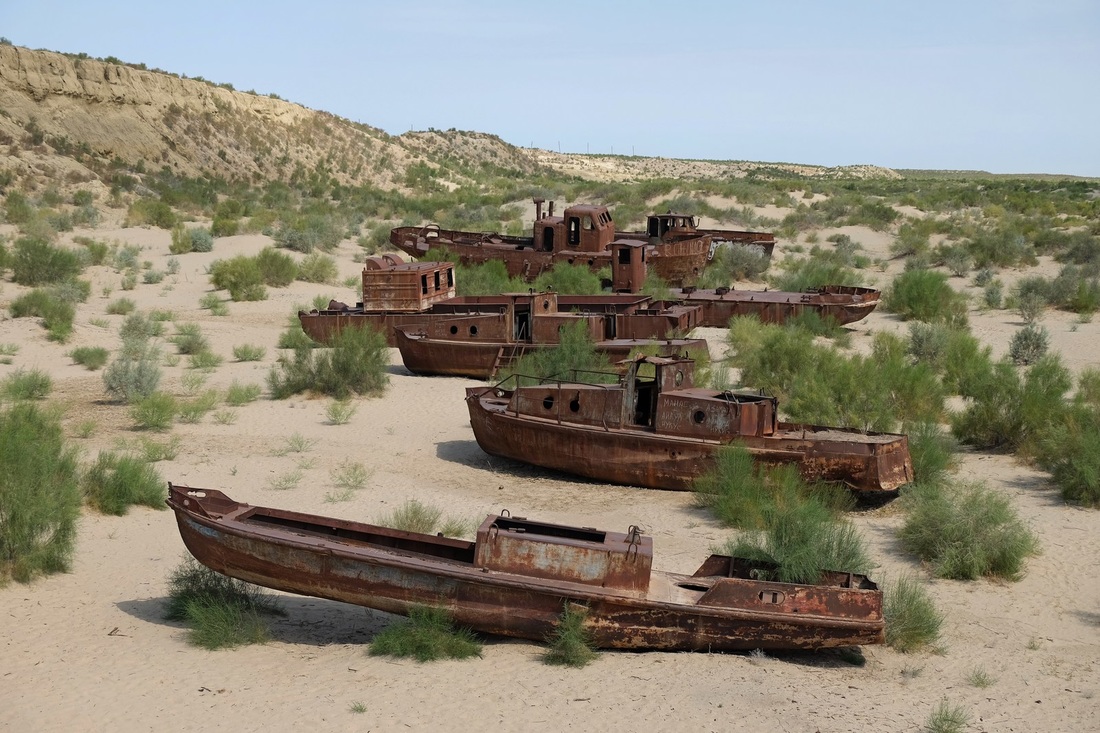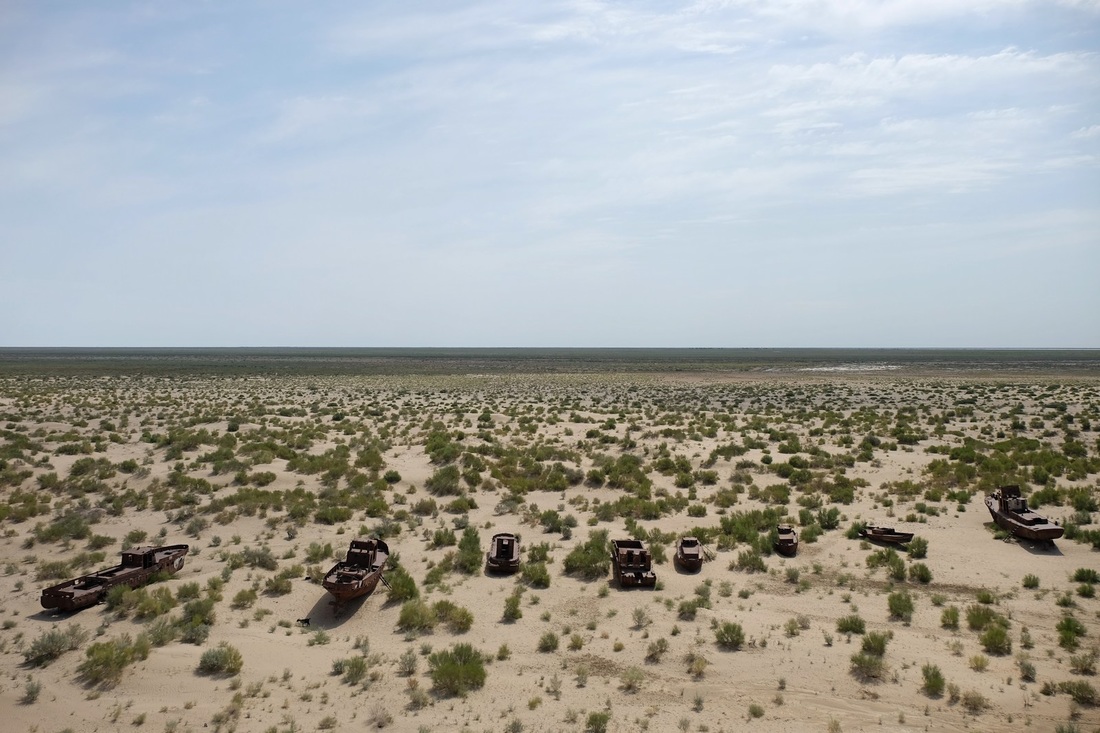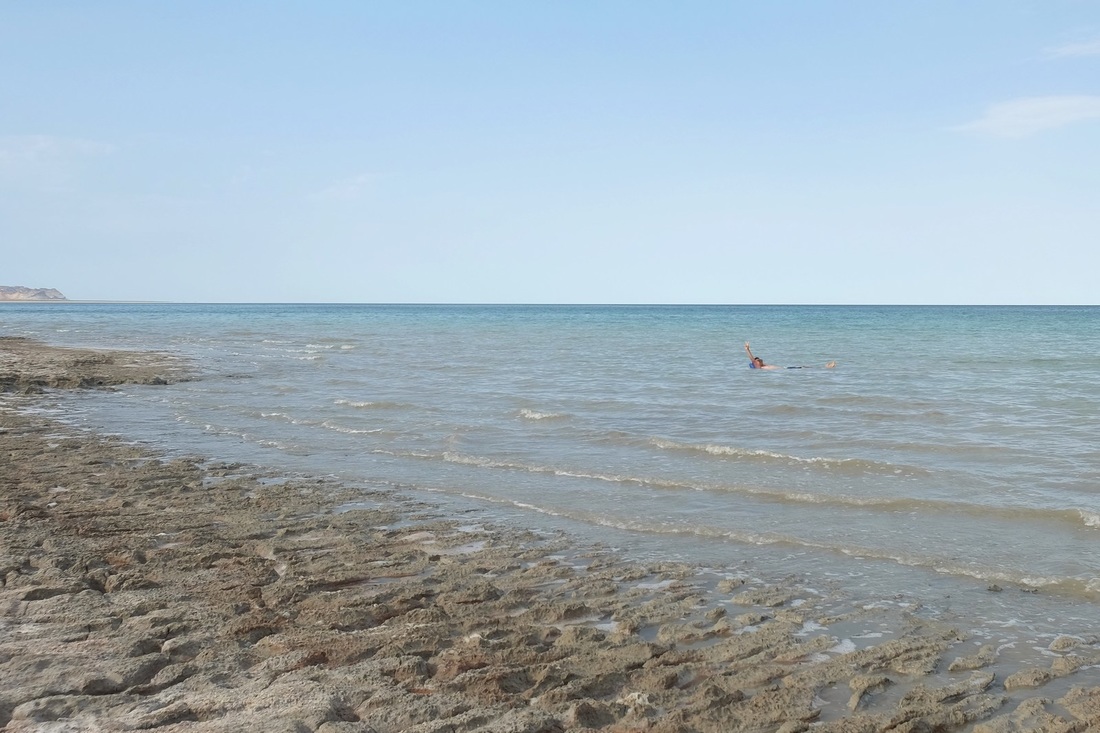T plus 54 - Aral Sea (Uzbekistan)
I had to see this for myself. Billed as one of the most shocking man-made environmental disasters ever, the demise of the Aral Sea over the past five decades is a reminder of the unthinkable consequences of environmental mis-management.
To put things into perspective, consider the graphic below:
This shows the steady shrinkage of the Aral Sea from 1977 to 2013. Image courtesy of United Nations Environment Programme. Once the fourth largest lake in the world, the Aral Sea today has lost 90% of its total surface area in a few decades. That's like a body of water the size of Ireland vanishing. Forever.
The reason? Mankind. Yes, that's right, us.
Starting from the 1960's, the former Soviet states of Kazakhstan, Turkmenistan and Uzbekistan began to divert massive amounts of water from the rivers feeding the Aral Sea to irrigate cotton and rice crops. Estimates of peak water withdrawal in the 1980's are about 120 cubic km per year. That's the equivalent of enough swimming pools to cover the entire country of Singapore. A hundred times over. Obviously something somewhere had to give.
At first it didn't seem so bad. The surface area of the Aral Sea shrank from 67,000 sq km to 60,000 sq km in the first 10 years of the irrigation schemes. So what did mankind do? Exploit more of course! The further acceleration of water diversion resulted in over half of the lake's former surface area disappearing by the early 1990's. Kazakhstan made efforts to dam the river flowing through its territory in its bid to save the Northern Aral Sea in the late 1980's, but it wasn't until 2005 where a permanent dam was built with the help of the World Bank and waters have stabilised there. This, however, means that the South Aral Sea, which is by far the larger body of water is condemned to die.
The consequences? Well, salinity for one. The salt-levels of the Aral Sea (once a fresh water lake) have increased by 10 times since the 1960's. Which means that practically nothing of significance survived. Certainly not in the South Aral Sea. Signs of life have returned to the North Aral Sea, due to Kazakhstan's conservation efforts, and the fishing industry is functioning once again. The disappearance of such a large body of water almost overnight has also wrecked havoc on the climate in the surrounding area. Moderated in the past by the Aral Sea, the winters and summers today are much harsher than before, and it will never be the same again. To make matters worse, the dry seabed has, in effect, unearthed more sins of our past. Previously diluted chemicals dumped into the Aral Sea have accumulated over decades in the now exposed sediment, and are being whipped up into our faces every time the wind blows.
And yet, the Aral Sea has been unbelievably gracious in conceding the last vestiges of its life. Vast gas deposits have been found where water once was. And guess what, mankind's at it again. I saw scores of gas wells and processing plants, with more being constructed every year. It does not seem that the Uzbek government is overly concerned. A university graduate I met naively thinks that the sea will somehow miraculously return. Shouldn't this important and disastrous episode in the region's history be drilled into every school-goer? It's simple science - you cannot replenish a body of water with less input than what is being evaporated every day!
My only consolation was that I got to see it before it's gone altogether. And although it's a depressing drive up to the ever-receding shoreline, reaching the actual waters was somewhat of an event for me, having not had a day by the beach for so long. The salinity levels are comparable to the Dead Sea and one floats effortlessly in the water. I spent the night there, sleeping under the stars, and contemplating how many more Aral Seas have to be sacrificed before we learn not to gamble with what we cannot afford to lose.
